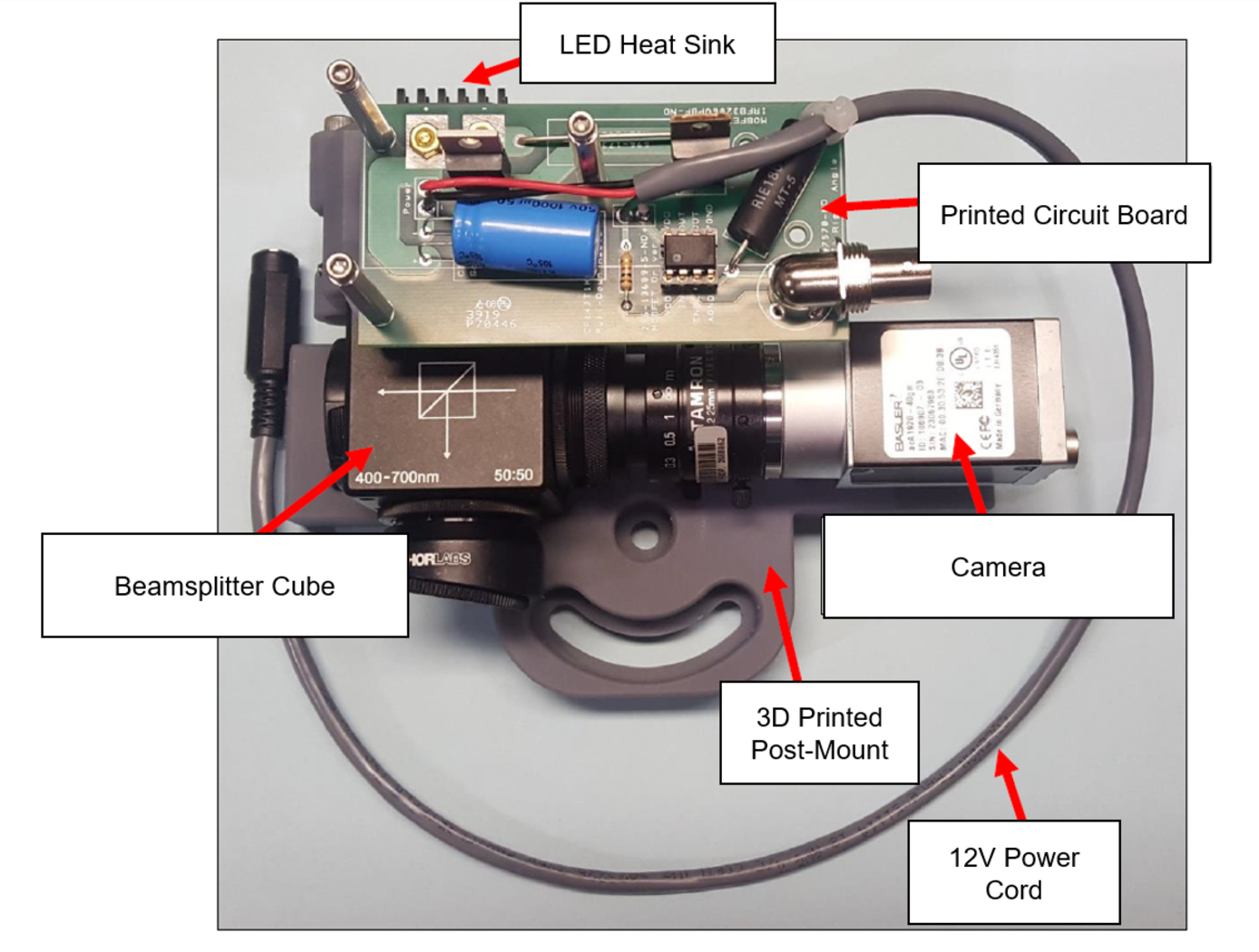Search
optics

Reflection-Reducing Imaging System for Machine Vision Applications
NASAs imaging system is comprised of a small CMOS camera fitted with a C-mount lens affixed to a 3D-printed mount. Light from the high-intensity LED is passed through a lens that both diffuses and collimates the LED output, and this light is coupled onto the cameras optical axis using a 50:50 beam-splitting prism.
Use of the collimating/diffusing lens to condition the LED output provides for an illumination source that is of similar diameter to the cameras imaging lens. This is the feature that reduces or eliminates shadows that would otherwise be projected onto the subject plane as a result of refractive index variations in the imaged volume. By coupling the light from the LED unit onto the cameras optical axis, reflections from windows which are often present in wind tunnel facilities to allow for direct views of a test section can be minimized or eliminated when the camera is placed at a small angle of incidence relative to the windows surface. This effect is demonstrated in the image on the bottom left of the page.
Eight imaging systems were fabricated and used for capturing background oriented schlieren (BOS) measurements of flow from a heat gun in the 11-by-11-foot test section of the NASA Ames Unitary Plan Wind Tunnel (see test setup on right). Two additional camera systems (not pictured) captured photogrammetry measurements.
Optics

Color Filtering Software Enhances Material Strain Analysis
Although monochrome DIC is a favored technique for measuring tensile strain in soft goods materials, the approach has difficulties when materials are interwoven. As mentioned, traditional DIC software treats regions for analysis as a solid surface and incorrectly represents deformations much larger than those actually present during testing, thus yielding false results. Additionally, considerable investments of time and effort from a trained technician are necessary to parse out strains in each direction of biaxially woven material. This entails meticulously identifying areas of interest whenever an undulating directional weave is visible.
The primary restraint layer of an inflatable space structure is comprised of orthogonally opposed, or interwoven straps. This DIC with RGB color filtering process presents a solution in providing more accurate and timely strain measurement of interwoven strap material by isolating a single strap direction for analysis. This approach leverages unique post processing capabilities developed at NASA to filter out red or blue photogrammetry patterns, allowing for tunable isolation of a particular color pattern and directional strap.
When restraint layer material was analyzed using VIC-3D software, the addition of RGB color filtering demonstrated improved strain field accuracy when compared to monochrome DIC alone. Notably, the implementation of RGB filtering allows the selection of a larger area of interest that results in minimal influence from the orthogonally opposed straps. This streamlines the tensile strain analysis process, significantly reducing the time needed to analyze large bodies of interwoven material.
“Digital Image Correlation with Color Filtering for Bi-Axially Strain Isolation”, has a technology readiness level (TRL) 6 (System/sub-system model or prototype demonstration in an operational environment), and it is now available for patent licensing.



